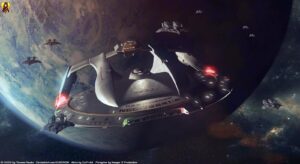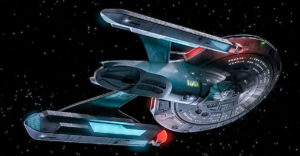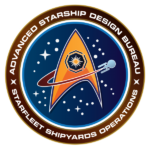

Part five of the six part ‘Obscure Dangers of Spaceflight’ series will go over one of the least thought of, yet most dangerous of all those dangers mentioned yet; the inability to stop. Just showing up to the party? Head on over to the other parts and see what you’ve been missing. You can find them here: Moon Dust, Space Junk, Static Electricity, and Heatstroke.
The Inability to Stop
Perhaps one of the most surprising aspects of spaceflight is the fact that it really doesn’t take all that much fuel to do it. The only thing you have to worry about is getting the craft to its top speed, or the speed at which it will need to travel to get its job done. For the space shuttle, this speed was close to 17,500 miles per hour; a speed that took relatively little fuel to attain. The problem that space travelers are faced with then, of course, is the pesky law that Newton came up with so long ago. See, as it turns out, Newton’s first law states that every object will remain at rest or in uniform motion in a straight line unless compelled to change its state by the action of an external force. Furthermore, he goes on to state in his third law that for every action, there is an equal and opposite reaction.

What’s this mean for our spaceship?
Well, unless we stop it, it will just keep going. In space, there is no friction that will slow a craft down. (Okay, for you science nuts out there, there is always friction, but not enough to do the job.) Space is simply not a Sunday drive in the family car; you can’t just cut the engine and expect to glide to a stop. You need something to stop with, such as the opposite force that we can create by burning fuels within the engines. Of course, without fuel, should our ship ever run out, our little ship would be in for a very, very, very long ride.


Going Out in a Blaze of…Nothing.
If our spaceship were to run out of fuel, the lifeblood of any craft in space, it would simply go on forever and ever, and ever, in a straight direction, going at the same speed that it left at. There wouldn’t be a blaze of glory to go out in either, because 99% of space is comprised of absolutely nothing. So as a testament to Newton, and the laws he put on paper, our spaceship, and its occupants, would simply fly out of our planetary orbit, our solar system, and into the great beyond at breakneck speeds with nothing to stop them but an equal and opposite force.


Gas Truck Rescue
We’ve heard lots about the rescue missions that NASA had set up following the Columbia disaster, so you might be thinking that if our spaceship runs out of fuel, NASA might be able to get a rescue mission off the ground. Well, its time to rethink that fallback plan.


Consider for a moment that our ship, headed for the moon or Mars, is traveling about the same speed as the Apollo 11 Commander Service Module. At that speed, nearly 24,000 miles per hour, you should start praying right away that the rescue craft is faster than anything else ever built. If it’s not, and even if they only take a week to set up the rescue mission, you will still be a cool four million miles away before it is even launched.
Curses, Newton!

















